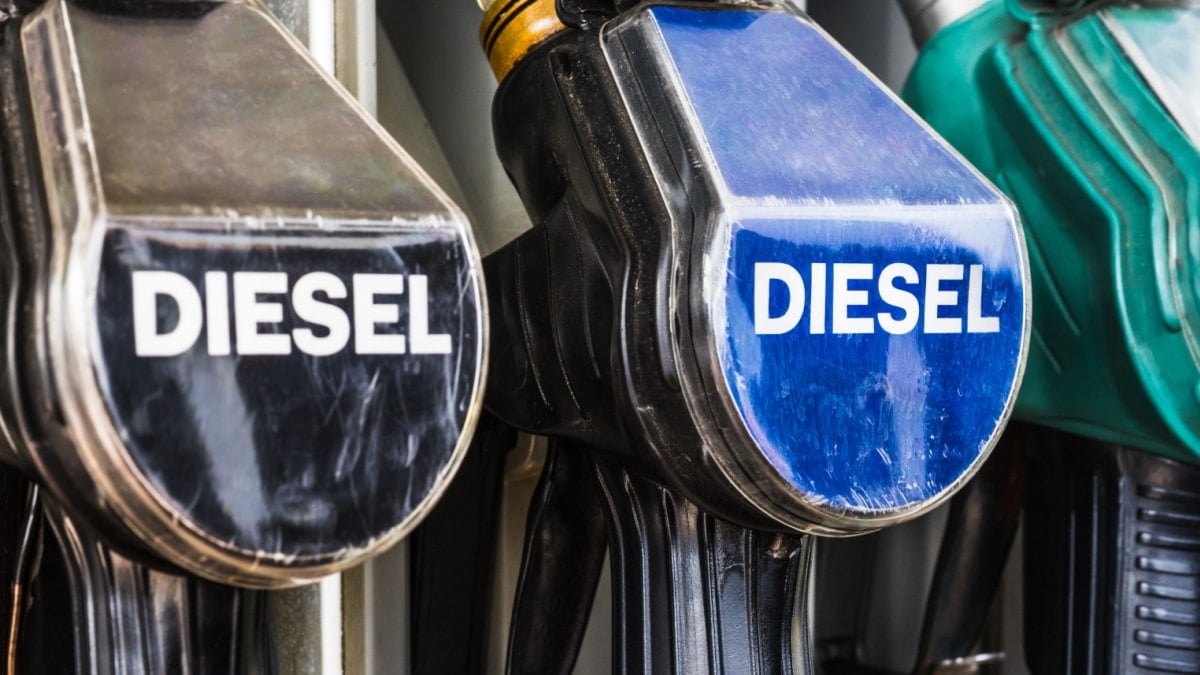Diesel Dart: A Fresh Look At Efficient Engine Performance
The search for better ways to move our vehicles forward, with less impact on our planet, is something many people think about. For a long time, diesel engines have been a big part of how we get around, especially for bigger vehicles and heavy work. Now, a new idea, what some are calling "diesel dart," is getting some attention. It’s a way of thinking about how these engines could work even better, pushing the boundaries of what we expect from them.
This "diesel dart" concept is not about a completely new type of engine, but rather a very precise approach to how diesel fuel is used. It’s about making every drop count, with a focus on getting the most out of the fuel while putting less unwanted stuff into the air. This idea aims to improve the diesel engine in ways that make it quieter, more fuel-wise, and cleaner for everyone.
In this discussion, we'll get into what "diesel dart" means for engines today and in the near future. We will explore the thinking behind it, how it could change things for drivers and the air we breathe, and perhaps even touch on some of the history that brought us to this point. So, you know, let's get into it.
Table of Contents
- What Exactly is Diesel Dart?
- The Thinking Behind the Dart
- Why Diesel Dart Could Make a Difference
- Common Questions About Diesel
- The Road Ahead for Diesel Dart
- Frequently Asked Questions About Diesel Dart
What Exactly is Diesel Dart?
The term "diesel dart" describes a forward-looking method for managing diesel engine operation. It refers to a system that delivers fuel with extreme accuracy, almost like a dart hitting a target. This isn't about changing the basic design of a diesel engine, but rather refining how fuel gets into the combustion chamber. It’s about controlling the timing, the amount, and the pressure of the fuel with a very high degree of exactness. This helps the engine run in a more complete way, burning more of the fuel and creating less waste. It's pretty cool, if you ask me.
The goal, you see, is to squeeze every bit of useful energy from the diesel fuel. This approach tries to cut down on things like smoke and other bits that come out of the exhaust pipe. By making the burning process inside the engine as good as it can be, "diesel dart" aims to offer a cleaner, more efficient ride. It's a fresh angle on an engine type that has been around for quite some time, and it seeks to keep diesel relevant in a world that is always looking for greener options. This is, in some respects, a very clever idea.
The Thinking Behind the Dart
The whole idea behind "diesel dart" comes from a deep look at how diesel engines work. We know, for instance, that the engine gets its name from Rudolf Diesel, the inventor who gave us this kind of internal combustion engine. Product names that come from an inventor’s name will often stay capitalized, though not always. The basic principle of a diesel engine involves igniting fuel with highly compressed air, rather than a spark plug. The "dart" part of this new concept is all about making that ignition process as perfect as possible every single time. It's quite a challenge, you know.
- Sophie Mudd Topless
- Ava Louise Onlyfans
- Kirsten Yule Zaagman Miss Tennessee
- Gianna Nicole
- Juanito El Sobador
Precision Fuel Delivery
At its core, "diesel dart" focuses on the precise control of fuel flow. This is a bit like how some engines, whether diesel or gas turbine, manage their speed and power. They do this by changing how much fuel gets in, not by altering the working fluid itself. With "diesel dart," this control is taken to an extreme level. Imagine a tiny, exact squirt of fuel, delivered at just the right moment, under just the right pressure. This kind of exactness helps the fuel mix better with the air, leading to a more complete burn. It means less fuel wasted and more useful work done by the engine. This is, basically, a very big deal for engine efficiency.
Less Noise, More Comfort
One of the things people sometimes mention about older diesel engines is the noise. Modern cars, however, aren't supposed to make much noise at all. The "diesel dart" approach also considers this. By making the combustion process smoother and more controlled, there's a good chance the engine will run quieter. This means more comfort for those riding inside the vehicle, and also for people near highways where these vehicles might be passing. Think about the comfort of travelers and the general public near the highway to consider, not to mention the fact that fuel is a factor. A quieter engine is, quite simply, a nicer engine to be around, and that's something that matters to many people.
Why Diesel Dart Could Make a Difference
When we talk about "diesel dart," we are really talking about an improvement that could have a wide impact. It's not just about a technical tweak; it's about making diesel engines fit better into our current world. The government, for instance, often places restrictions on both diesel fuel and diesel engines because of concerns about air quality and fuel use. This concept aims to address those concerns head-on, offering a path for diesel technology to continue to be a valuable part of our transportation systems. It's, you know, a way to keep things moving forward.
Better Fuel Economy
One of the most immediate benefits of such a precise system is improved fuel economy. When fuel burns more completely, you get more miles for each gallon or liter. This is a straightforward benefit for anyone who drives a diesel vehicle, whether it's a big truck or a passenger car. It means less money spent at the pump, which is something everyone likes. This could also mean that we are dealing with a case where, perhaps, there is less of a negative externality of consumption, which results in oversupply and greater consumption of fuel. By making each drop of fuel work harder, "diesel dart" could help save resources and money, which is, honestly, a pretty good outcome.
Cleaner Air Concerns
Another big area where "diesel dart" could shine is in reducing emissions. Diesel engines are known for creating certain kinds of exhaust, especially tiny bits called particulates. By making the fuel burn more fully, the engine produces fewer of these unwanted things. This is a big step towards cleaner air. The government has placed restrictions on diesel emissions for good reason, and any technology that helps meet or exceed those limits is a step in the right direction. It's about finding ways to use diesel without causing as much impact on the air we all breathe, and that's, you know, something everyone can get behind.
Common Questions About Diesel
When discussing diesel engines and their advancements, some common questions often pop up. These questions sometimes relate to the very nature of diesel fuel or the tiny things that come out of the exhaust. It's good to clear up some of these points to have a better overall picture of the technology. As a matter of fact, knowing the details can really help.
Flammable vs. Combustible: What's the Real Story?
There's often some confusion about the words "flammable" and "combustible." Many dictionaries don't seem to show much difference if the words express that something unexpected happens. However, in England, I was always taught that the difference between flammable and inflammable was that inflammable required a flame to permit burning. Gas, for example, is flammable; it catches fire easily with a spark or flame. Diesel vapor, on the other hand, is combustible. This means it needs more heat or a sustained flame to start burning. This distinction is important for safety and for understanding how different fuels behave. It's, you know, a subtle but important difference.
Particulate or Particle: Getting the Words Right
Another question that comes up is, "What's the difference between particulate and particle?" And should it be "diesel particulates" or "diesel particles," and why? In general use, "particle" is a very small piece of something. "Particulate," however, often refers to very fine, solid or liquid matter that is suspended in a gas, like air. It's usually used when talking about pollution. So, when we talk about exhaust, it should definitely be "diesel particulates." These are the tiny bits of soot and other matter that come out of an engine's exhaust. You could provide three or more examples where it should use particulate: for instance, "airborne particulate matter," "particulate filters in exhaust systems," or "fine particulate pollution." It's a specific term for a specific kind of environmental concern, and using it correctly helps everyone understand the issue better. That's, you know, pretty much the way it works.
The Road Ahead for Diesel Dart
The idea of "diesel dart" points to a future where diesel engines are even more refined and responsible. It's a way of saying that there are always several ways to do something, and that innovation in engine design is still happening. The earliest printed citation of this proverbial saying that I can find is in a very old book, suggesting that the spirit of finding better ways has been with us for a long time. As of late 2023, and looking ahead to 2024, the push for cleaner, more efficient vehicles continues. The "diesel dart" concept is a promising step in that direction, showing that even well-established technologies can still get better. It’s about making sure that diesel continues to serve its purpose while meeting the demands of a world that values clean air and careful use of resources. You can learn more about engine technology advancements on external research sites. And, you know, we are always learning more about diesel dart on our site, and you can always link to this page for fresh information.
Frequently Asked Questions About Diesel Dart
Here are some common questions people ask about this idea:
What makes "diesel dart" different from regular diesel engines?
- Basically, "diesel dart" is about super-precise fuel delivery, which is a bit like hitting a very small target with every fuel injection. This helps the engine burn fuel more completely, which means better mileage and less exhaust. It's an improvement on existing diesel ways, not a whole new engine type, so, you know, it's a refinement.
Will "diesel dart" technology make diesel vehicles more expensive?
- Initially, any new technology can add to the cost of a vehicle. However, the aim is that the savings from better fuel economy and potentially lower maintenance due to cleaner burning would balance that out over time. It's a question of long-term value versus upfront cost, which is, frankly, something many people think about.
How does "diesel dart" help the environment?
- By making the fuel burn more completely, "diesel dart" aims to reduce the amount of tiny bits, or particulates, and other emissions that come out of the exhaust. This means cleaner air and less impact on our surroundings. It's, in a way, about making diesel a more environmentally friendly choice.

Diesel Clothing Wallpaper

Diesel – Logos Download

What Color Is Diesel Fuel?